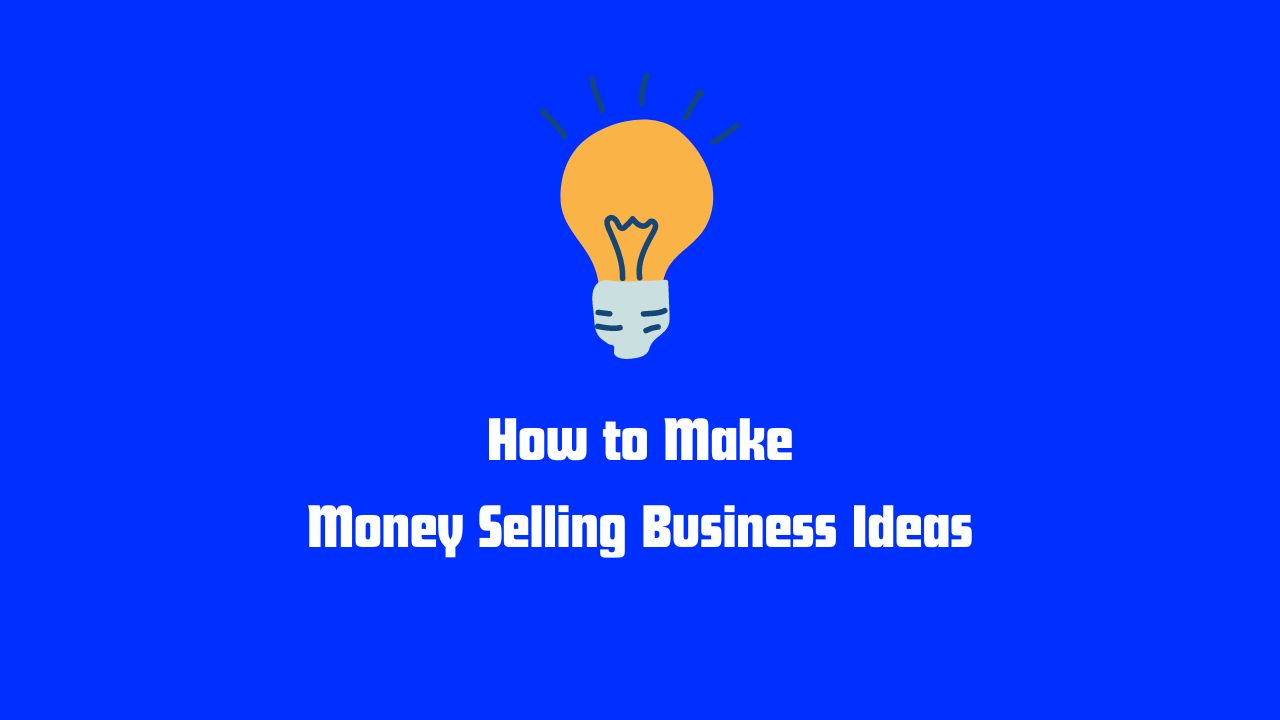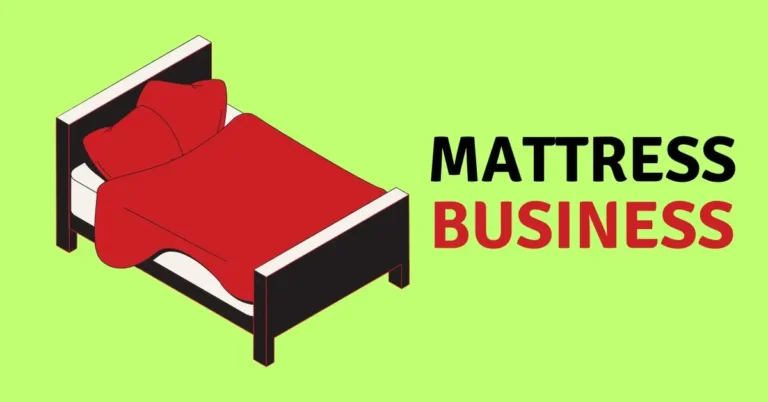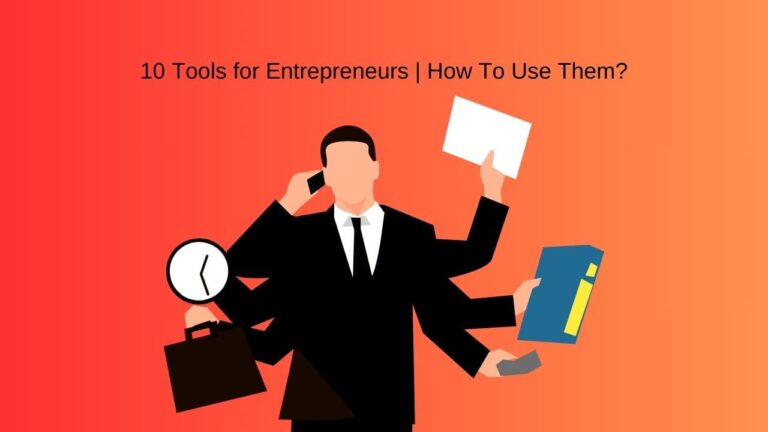How to Make Money Selling Business Ideas
Selling business ideas is a fantastic way to make money, especially if you have creativity and innovation. In this article, we will discuss one of the major topics, that is, how to make money selling business ideas. We will break down this into simple steps and cover everything you need to know to get started. Think of it as a beginner’s guide to turning your bright ideas into cash. Let’s dive in!
1. Understanding Business Ideas
Before we jump into selling business ideas, let’s clarify what a business idea is. It’s a concept that outlines a new business or an improvement to an existing one. For example, it could be a new type of app, a unique product, or a fresh approach to a service.
Why Sell Business Ideas?
You might wonder why someone would want to sell business ideas. There are a few good reasons:
- Expertise in Innovation: If you’re great at coming up with ideas but not interested in running a business, selling ideas can be a perfect fit.
- Low Risk: Selling ideas doesn’t require a large investment upfront.
- Leverage Your Creativity: You can monetize your creativity without needing to build or manage a business.
2. Developing a Great Business Idea
To sell a business idea, you need to have a compelling and valuable concept. Here’s how to develop one:
2.1 Identify a Problem
Start by identifying a problem that people face. This could be anything from a common inconvenience to a significant challenge in a specific industry. For instance, if many people complain about the high cost of pet care, your idea could be a subscription service for affordable pet products.
2.2 Find a Unique Solution
Once you’ve pinpointed a problem, brainstorm unique solutions. Your idea should offer something new or different from existing solutions. For example, if you want to address the problem of late-night food cravings, you might come up with a new kind of late-night delivery service.
2.3 Validate Your Idea
Before you start selling your idea, you need to make sure it has potential. Conduct some research:
- Surveys: Ask potential customers about their needs and whether your idea could solve their problem.
- Competitor Analysis: Check out existing solutions and see how your idea differs or improves on them.
- Market Research: Understand the market size and demand for your idea.
3. Packaging Your Idea
Once you have a solid idea, you need to package it effectively to make it appealing to potential buyers.
3.1 Create a Clear Description
Write a clear and concise description of your idea. Make sure it explains the problem, your solution, and why it’s better than other options. Use simple language and avoid jargon.
3.2 Develop a Business Plan
A well-organized business plan will make your idea more attractive. It should include:
- Executive Summary: A brief overview of your idea.
- Market Analysis: Information about your target market and competitors.
- Marketing Strategy: How your idea will be promoted.
- Revenue Model: How your idea will make money.
3.3 Design a Pitch Deck
A pitch deck is a visual presentation that highlights the key aspects of your idea. It should be engaging and easy to understand. Include slides on:
- The problem you’re solving
- Your solution
- Market Opportunity
- Revenue model
- Team (if applicable)
4. Finding Buyers for Your Idea
Now that you have your idea packaged, it’s time to find buyers. Here’s how:
4.1 Network
Networking is crucial in finding buyers. Attend industry events, join business groups, and connect with entrepreneurs and investors. Share your idea and gather feedback. You never know who might be interested in buying it.
4.2 Use Online Platforms
There are several online platforms where you can sell business ideas:
- Idea Marketplaces: Websites like IdeaBuyer and Quirky allow you to list and sell your ideas.
- Freelance Platforms: Sites like Upwork and Fiverr offer opportunities to showcase your ideas and connect with potential buyers.
- Social Media: Use platforms like LinkedIn and Twitter to promote your idea and connect with interested parties.
4.3 Pitch Directly to Companies
If your idea is tailored to a specific industry or company, consider pitching it directly to them. Research the companies that might benefit from your idea and reach out with a professional pitch.
5. Protecting Your Idea
Before selling your idea, it’s important to protect it to prevent theft or misuse.
5.1 Use Non-Disclosure Agreements (NDAs)
An NDA is a legal contract that prevents others from disclosing or using your idea without permission. Use it when sharing your idea with potential buyers.
5.2 Patent Your Idea
If your idea is unique and innovative, you might want to consider applying for a patent. A patent gives you exclusive rights to your invention, preventing others from making, using, or selling it without your permission.
5.3 Trademark Your Brand
If your idea involves a brand or logo, consider registering a trademark. This protects your brand name and logo from being used by others.
6. Selling Your Idea
When it’s time to sell your idea, follow these steps:
6.1 Set a Fair Price
Determine the value of your idea. This can be challenging, but consider factors like its potential market, uniqueness, and the effort you put into developing it. You can also look at similar ideas and their market prices for reference.
6.2 Negotiate Terms
Be prepared to negotiate the terms of the sale. This includes the price, payment schedule, and any ongoing involvement you might have. Make sure you have a written agreement that outlines all the details.
6.3 Close the Deal
Once you’ve agreed on terms, finalize the sale with a formal contract. This should include:
- Sale Price: The amount agreed upon.
- Payment Terms: How and when you’ll receive payment.
- Ownership Rights: Details on the transfer of ownership.
- Confidentiality Clauses: Terms to protect your idea and any confidential information.
7. Post-Sale Considerations
After selling your idea, there are a few things to consider:
7.1 Follow Up
Check in with the buyer to ensure they have everything they need and to address any issues that may arise. Maintaining a good relationship can lead to future opportunities.
7.2 Keep Records
Keep detailed records of the sale, including contracts and communications. This can be helpful for legal or financial purposes.
7.3 Move On to New Ideas
Once the sale is complete, continue brainstorming and developing new ideas. The process of selling ideas can be ongoing and profitable if you keep generating fresh and valuable concepts.
Also read: 43 Creative Product Ideas for College Students (2024)
Conclusion
Selling business ideas can be a rewarding way to make money, especially if you have a creative mind and a passion for innovation. By understanding how to develop, package, and sell your ideas, you can turn your creativity into a profitable venture. Remember to protect your ideas, find the right buyers, and always be open to new opportunities. With these tips, you’ll be well on your way to making money from your business ideas. Happy brainstorming!







